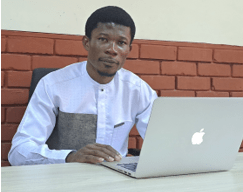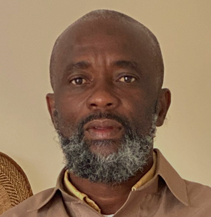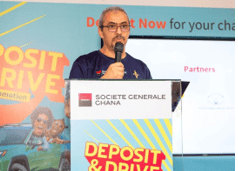By Michael WILSON(Dr)
Let’s face it. Research doesn’t start in a lab, surrounded by people in white coats mumbling about control variables and chromatography. It starts with a toddler trying not to fall. Seriously. That wobbly balancing act? It’s an open-field experiment in Newtonian physics.
And just like that, we all begin life as researchers, not students. Wonder, curiosity, experimentation is hard-coded into the human operating system. But here’s the problem: somewhere between learning to walk and being told to sit still and memorize the periodic table, we kill it.
Today’s education system, particularly at the junior and senior high school levels, runs on outdated software that is declarative, propositional, and painfully static. It prizes regurgitation over discovery. We’re through this system, pumping kids full of facts but starving them of wonder. That’s not education. That’s data entry.
If we’re serious about grooming the next generation of scientists, innovators, and yes, the occasional rebellious genius, we need to shift the whole paradigm. It’s about time we stop stuffing heads and start firing up minds.
At the Electronics Division of the Council for Scientific and Industrial Research – Institute for Scientific and Technological Information (CSIR-INSTI), we didn’t just complain about the system. We rewrote the code using our Junior Researcher Programme (JRP)
Into the Junior Researcher Programme (JRP) – Think of JRP as research kindergarten where Junior and senior high school students get paired with senior researchers to tackle actual problems — not hypothetical ones dreamt up in dusty textbooks.
These kids aren’t playing science; they’re doing science. Last year, over 60 students took part. Divided into three age categories (elementary, junior, and senior), they got their hands dirty building solutions for food insecurity, urban sustainability, and autonomous mapping systems.
Let me introduce you to two of the standout projects that didn’t just impress local judges but also competed on the world stage at the World Robot Olympiad in Izmir, Türkiye, under the Ghana Robotics Academy Foundation’s banner.
Project 1: Smart garden monitoring robot – the green guardians
Meet Rehan Ashfaq, Aneesh Dupaguntla, and Enam Bani — ages 13 to 15 — who built RAPGO (Robotic Assisted Precision Garden Orchestration). In a country where middle-income households spend 30–50percent of earnings on food, that’s not just a cool acronym. It’s a lifeline.
Their project equips Ghana’s unused backyard spaces with smart soil sensors connected to IoT edge nodes. When conditions dip, an installed robotic system downloads real-time data and gets to work: applying fertilizer, clearing weeds, optimizing garden health. These kids were solving food security, urban sustainability, and economic empowerment all before they can legally vote.
Their solution hits eight key Sustainable Development Goals (SDGs) in one go — from climate action to zero hunger. Not bad for a project that started in a junior researcher bootcamp.
Project 2: Autonomous ground vehicles with SLAM – mapping the future
Meanwhile, Muhammad Nurul Haqq Munagah, Edwina Frances Kate Mensah and Jonathan Darko Adoo who represented the senior division wasn’t slouching. They built an Autonomous Ground Vehicle (AGV) with Simultaneous Localization and Mapping (SLAM) using RPLIDAR and Intel’s D435i depth camera. That’s tech speak for: it can see, think, and navigate on its own.
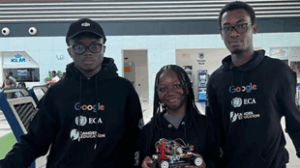
Why does this matter? Think precision agriculture, search and rescue, ecological monitoring and any place where humans either can’t or shouldn’t go. The fusion of LIDAR and camera data gives these AGVs real-time environmental awareness, enabling hyper-accurate mapping in even the trickiest terrains.
This isn’t toy robotics. It’s cutting-edge multisensor integration research. And the fact that it’s being done by 16–21-year-olds? That should tell us everything we need to know about the untapped potential locked in our schools.
From bootcamp to benchmarks – a transition from basic to applied research
And here’s the kicker: these weren’t one-off science fair projects. They’ve now been pulled into CSIR-INSTI’s mainstream research ecosystem. The smart gardening project? It’s now in applied research, integrated into our AgriSense Hub, a state-of-the-art phenomics and crop data facility.
We’re using this work to collect, label, and train AI systems for precision farming. Yes, kids are literally helping build the future of Ghana’s food systems. The goal of the JRP is simple: grow scientists, not just students.
Through mentorship, real-world projects, and alignment with CSIR’s strategic research themes, we’re creating a talent pipeline that doesn’t just serve Ghana but the world.
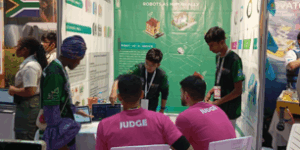
Our partners – it takes a village
None of this happens in a vacuum. We’ve had critical support from CITSYS Limited, The Responsible AI Lab at KNUST, the Mikrobot Academy and the tireless evangelists at the Ghana Robotics Academy Foundation.
Together, we’re proving what happens when you give young people tools, mentorship, and most importantly, permission to explore.
So, next time you hear someone say “kids these days are glued to their screens,” remind them: yes — some of them are.
But others are using those screens to prototype solutions to climate change. The future belongs to the curious. We just need to stop beating it out of them.
>>>the writer is the head of the Electronics Division at CSIR-INSTI and also volunteers as the trainer-in-chief of the Ghana Robotics Academy Foundation. He’s spent the last decade training children to think, tinker, and build.

